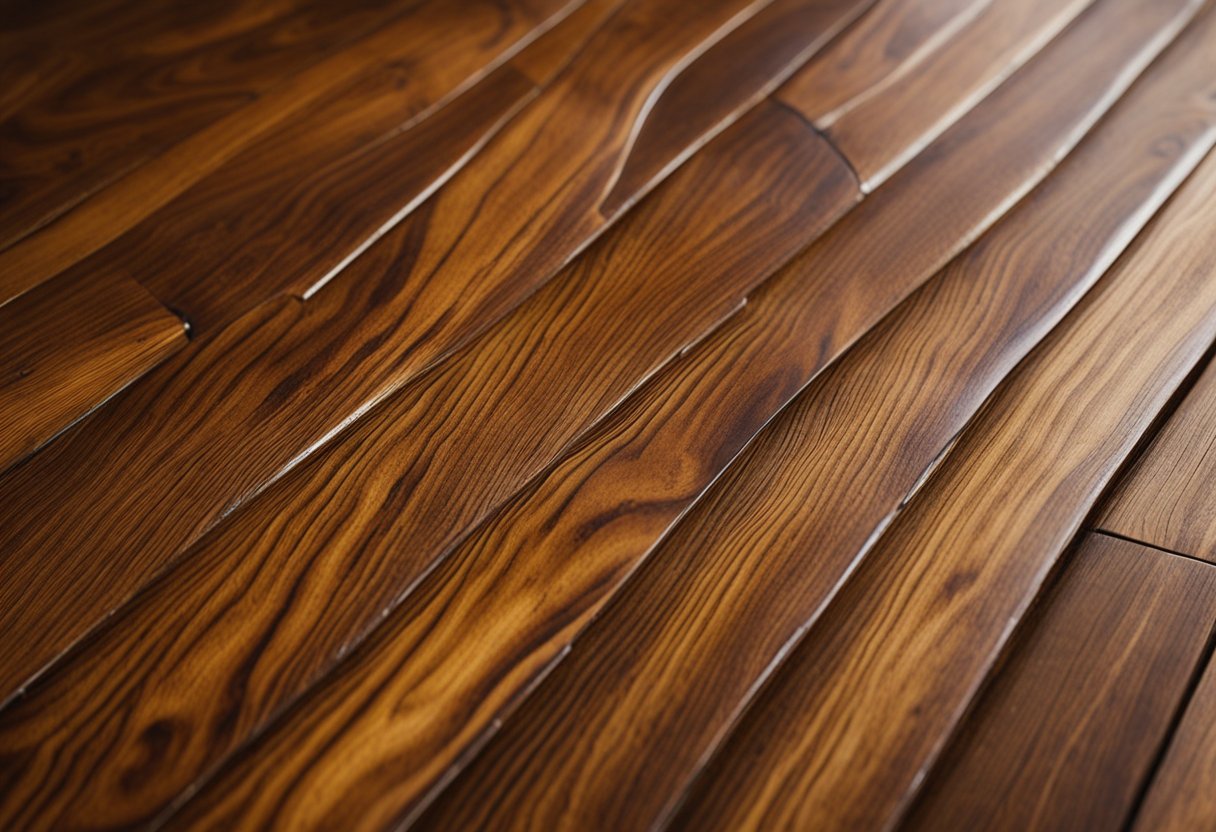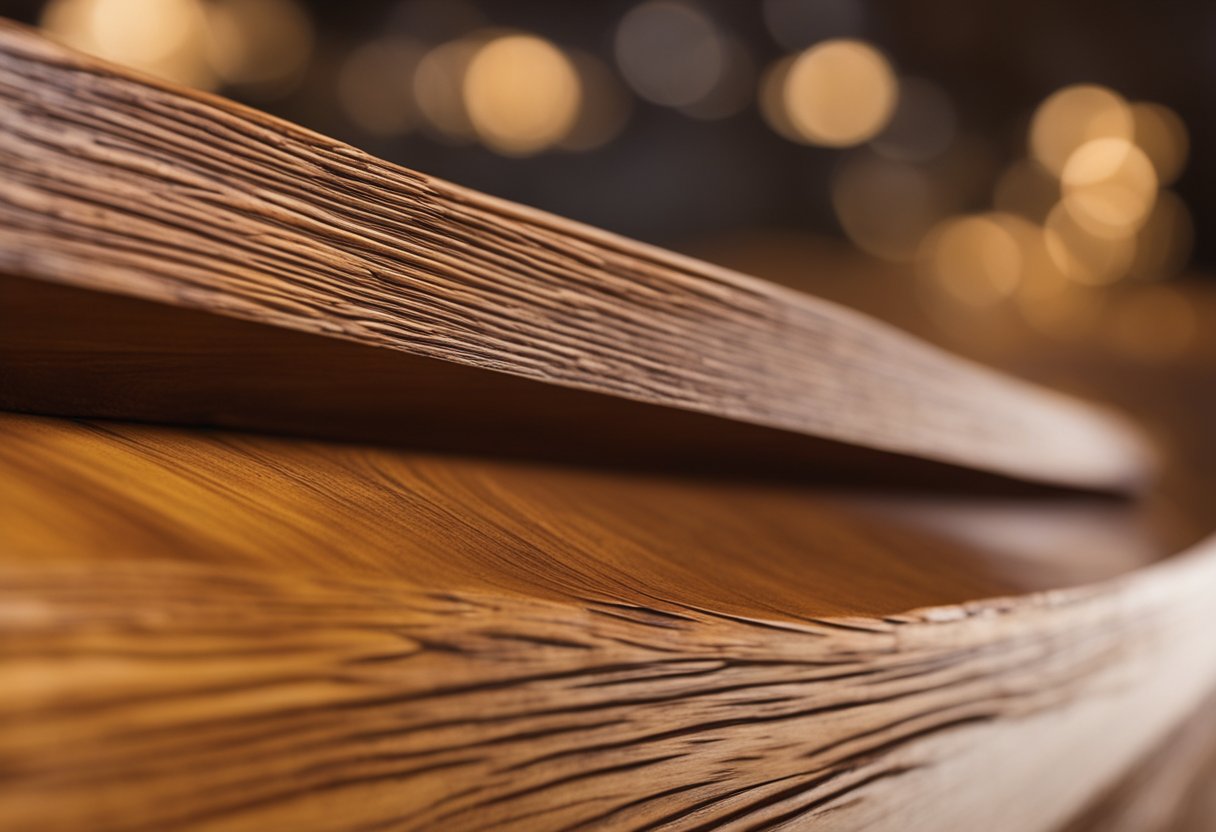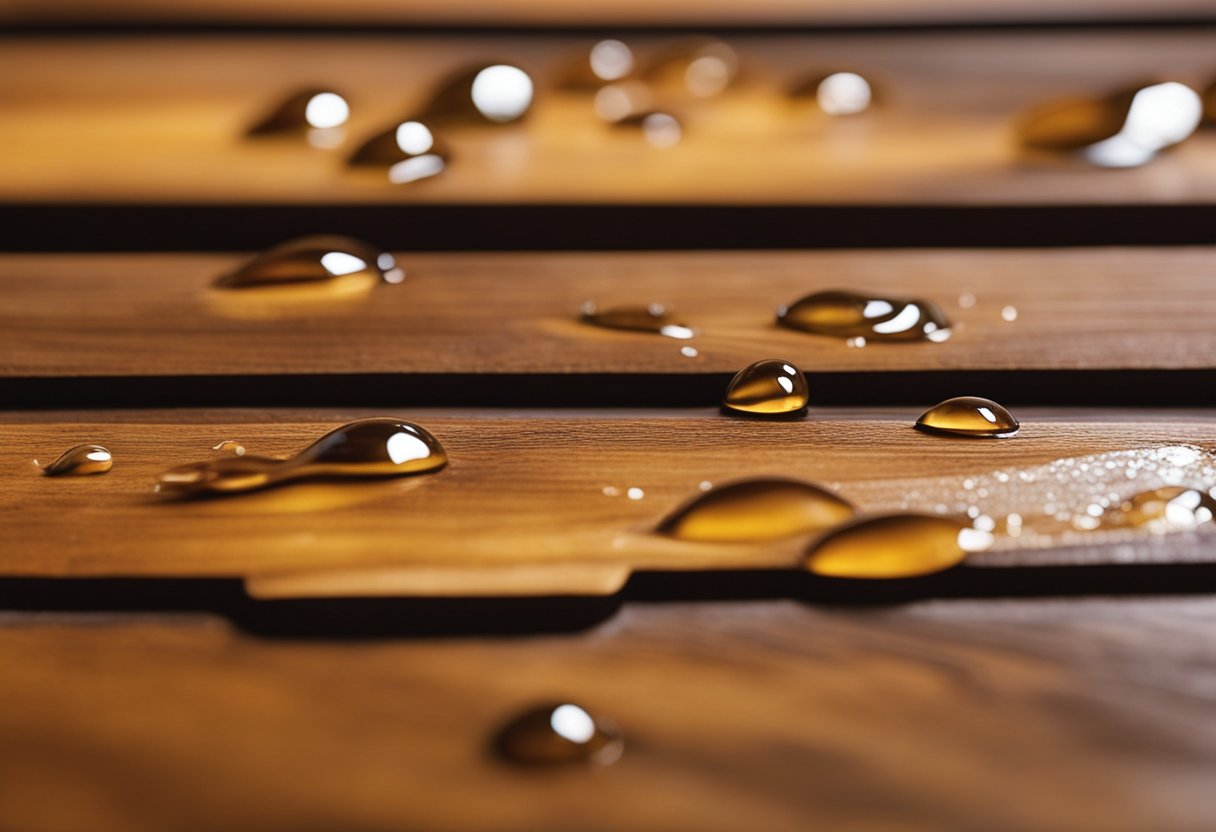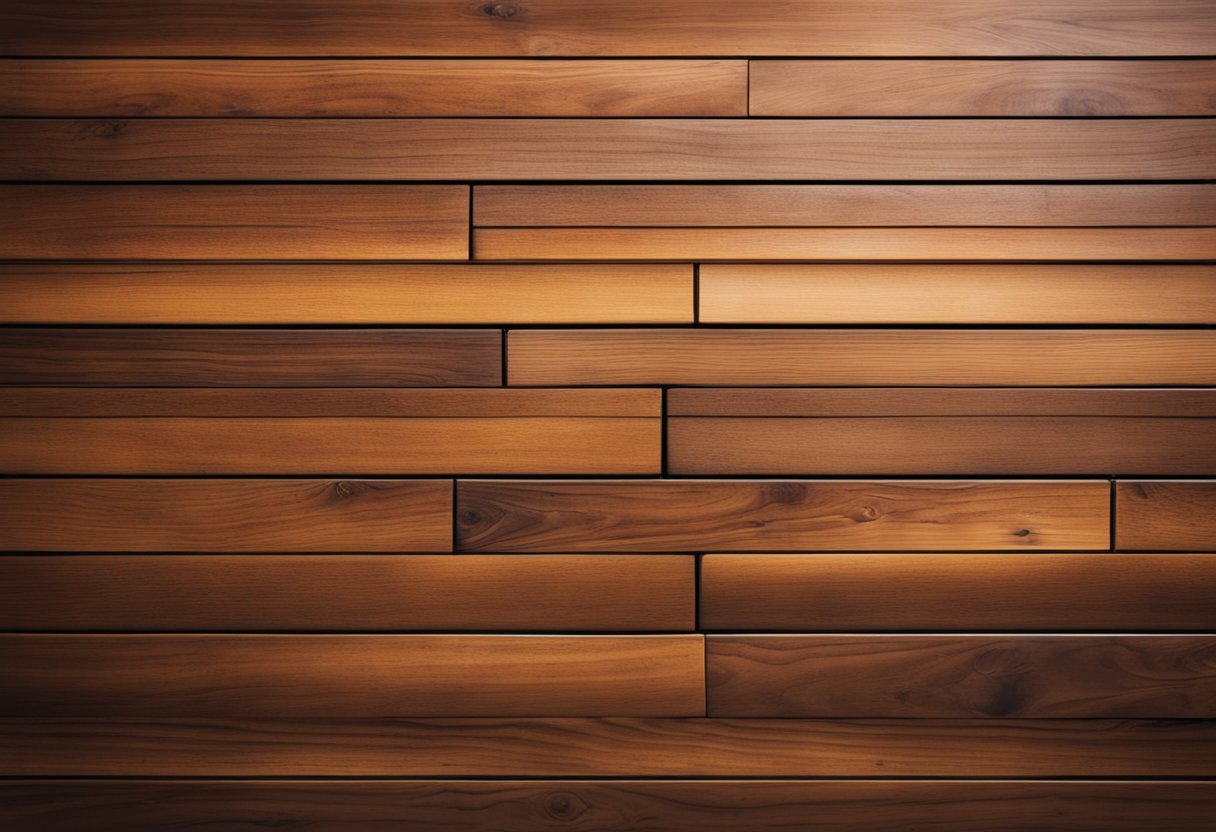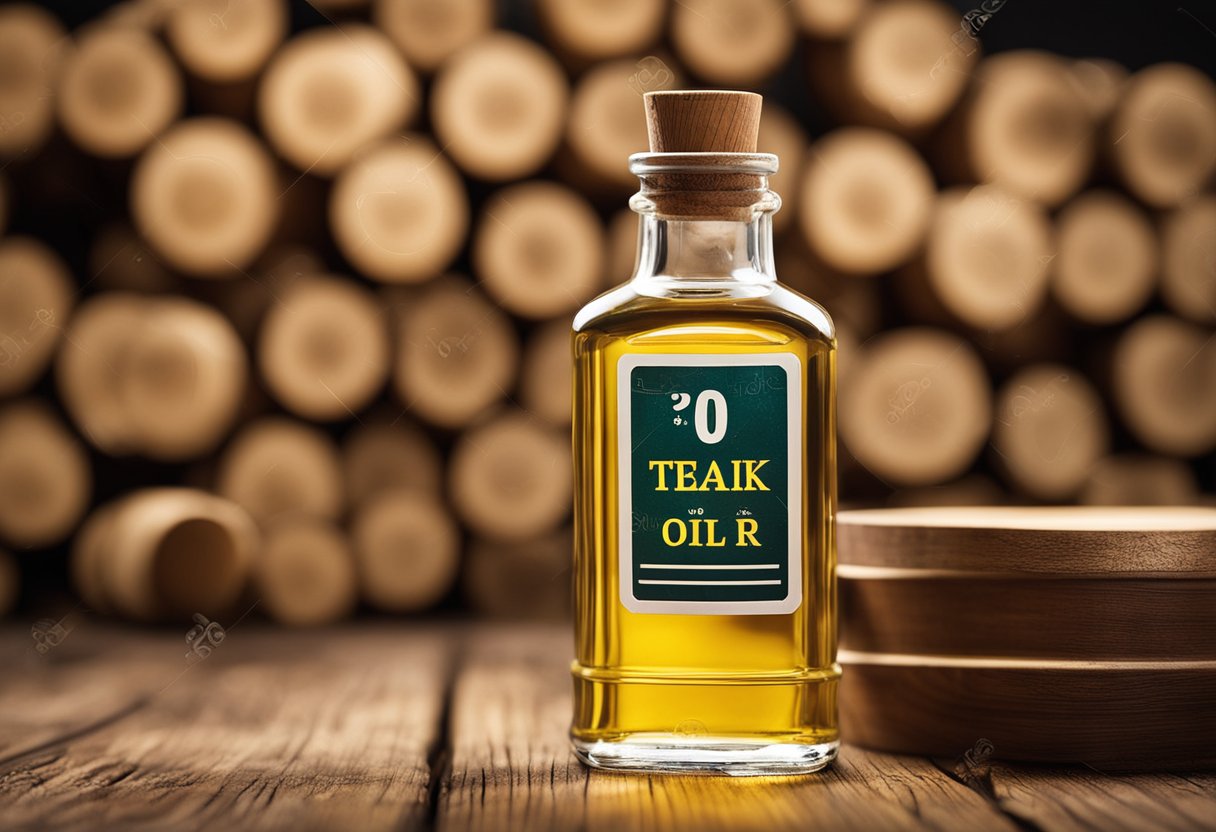I have been working with Watco Teak Oil for a while now, and I have noticed that sometimes the finish can end up sticky. This can be frustrating, especially if you have put a lot of effort into a woodworking project. Sticky finish can be caused by a variety of factors, including improper application, unsuitable wood types, and insufficient drying time. In this article, I will discuss some of the common issues that lead to a sticky finish and offer some tips on how to troubleshoot the problem.
Understanding Watco Teak Oil is essential to achieving a beautiful finish. This oil is a blend of natural oils and resins, designed to penetrate deep into the wood and protect it from moisture and UV rays. It is ideal for outdoor furniture and other woodwork that will be exposed to the elements. However, to get the best results, you need to apply it correctly and allow it to dry fully. Failure to do so can result in a sticky, tacky finish that is unpleasant to the touch.
To avoid this issue, it is important to follow proper application techniques and allow sufficient drying time. You should also choose the right wood types and maintain your finished pieces properly. In the following sections, I will explore each of these factors in more detail and offer some troubleshooting tips for when things go wrong.
Key Takeaways
- Proper application techniques and sufficient drying time are essential to achieving a non-sticky Watco Teak Oil finish.
- Unsuitable wood types can also lead to a sticky finish.
- Troubleshooting tips include using mineral spirits, removing and reapplying the finish, and buffing the surface with fine steel wool.
Understanding Watco Teak Oil
As someone who has worked with wood finishes for many years, I can confidently say that Watco Teak Oil is one of the most popular teak oil brands out there. It is a unique blend of natural oils and varnish that penetrates deep into the wood pores to create a rich, warm glow of a hand-rubbed finish.
One of the main benefits of Watco Teak Oil is that it is easy to apply and dries quickly. However, sometimes the finish can remain sticky or tacky even after it has dried. This can be frustrating, especially if you have put a lot of effort into your woodworking project.
There are several reasons why Watco Teak Oil may remain sticky. One reason is that excess oil was left on the surface of the wood or it was not wiped sufficiently during product application. Another reason could be that the temperature in the room was too low, preventing the oil from drying properly.
To avoid this problem, it is important to follow the manufacturer’s instructions carefully. Make sure you apply the oil evenly and wipe off any excess with a clean cloth. Also, ensure that the room temperature is between 60-80°F (15-27°C) and that there is adequate ventilation.
In summary, Watco Teak Oil is a popular and effective wood finish that can create a beautiful hand-rubbed finish on dense woods such as teak, rosewood, and mahogany. However, it is important to apply it correctly and under the right conditions to avoid it remaining sticky or tacky.
Common Issues with Teak Oil Finish
https://www.youtube.com/watch?v=WEW4QWWwBPE&embed=true
When it comes to teak oil finish, sticky surfaces are one of the most common issues that people face. There are several reasons why your teak oil finish might be sticky, and in this section, I will discuss some of the most common culprits.
Incorrect Application
One of the most common causes of a sticky teak oil finish is incorrect application. If you apply too much oil or don’t wipe off the excess, the finish can become sticky. Additionally, if you don’t let the oil cure fully before using the furniture, it can also cause the finish to remain sticky.
Excess Oil
Another reason why your teak oil finish might be sticky is because of excess oil. If you apply too much oil, it can take longer to dry, and the finish can become sticky. To avoid this issue, make sure to apply the oil in thin coats and wipe off any excess.
Too Much Oil
Applying too many coats of teak oil can also cause the finish to become sticky. If you apply too many coats, the excess oil will not be able to dry properly, and the finish will remain sticky. To avoid this issue, make sure to follow the manufacturer’s instructions and only apply the recommended number of coats.
Sticky Finish
If your teak oil finish is still sticky after it has dried, it might be because of a sticky finish. This can happen if the oil has not been allowed to dry completely, or if the surface was not properly prepped before applying the oil. To fix this issue, you can lightly rub the surface with fine steel wool and more of the teak oil to remove the excess.
In conclusion, there are several reasons why your teak oil finish might be sticky. By following the manufacturer’s instructions, applying the oil in thin coats, wiping off any excess, and allowing the oil to dry completely, you can avoid these issues and achieve a beautiful, non-sticky finish.
The Drying Process
As someone who has worked with Watco Teak Oil Finish before, I understand the frustration of dealing with a sticky finish. The drying process of teak oil is a crucial step in achieving a smooth and even finish.
The drying time of Watco Teak Oil Finish varies depending on various factors such as humidity, temperature, and the number of coats applied. In general, the oil will take around 8-24 hours to dry completely. However, it’s important to note that the oil will remain tacky to the touch for some time after application.
To ensure that the teak oil dries properly, it’s important to follow the manufacturer’s instructions. This includes applying the oil in thin coats, wiping off any excess oil, and allowing the oil to dry for the recommended time before applying another coat.
It’s also important to note that applying too much oil or not wiping off the excess can result in a sticky finish that takes longer to dry. In some cases, the oil may not dry at all, leading to a frustrating experience.
In conclusion, the drying process is an essential step in achieving a smooth and even finish with Watco Teak Oil Finish. By following the manufacturer’s instructions and taking the necessary precautions, you can ensure that your teak oil dries properly and results in a beautiful finish.
Proper Application Techniques
https://www.youtube.com/watch?v=9V72dPsfW94&embed=true
To ensure a smooth and non-sticky finish when using Watco Teak Oil, proper application techniques are crucial. Here are some tips to help you achieve the best results:
Brushing
When using a brush to apply Watco Teak Oil, use a natural bristle brush, such as a China bristle brush. Synthetic brushes may not work as well. Brush the oil onto the wood in the direction of the grain, making sure to apply an even coat. Avoid over-brushing, as this can cause the finish to become sticky.
Wiping
Wiping is the most common method of applying Watco Teak Oil. To do this, pour a small amount of oil onto a clean, lint-free cloth and apply it to the wood in the direction of the grain. Make sure to wipe off any excess oil with a clean cloth after 30 minutes. If the finish is still sticky after wiping, you may have applied too much oil or not wiped off enough.
Spray
Spraying is another option for applying Watco Teak Oil. Use a high-quality sprayer and make sure to apply an even coat. Be careful not to overspray, as this can cause the finish to become sticky.
Hand-Rubbed Finish
A hand-rubbed finish can be achieved by applying Watco Teak Oil with a cloth and then rubbing it into the wood with a clean, dry cloth. This will help to ensure an even finish and reduce the risk of the finish becoming sticky.
By following these proper application techniques, you can achieve a beautiful and non-sticky finish with Watco Teak Oil.
Maintenance and Care
https://www.youtube.com/watch?v=YcXDSkoIPB0&embed=true
As someone who has used Watco Teak Oil finish, I know that it can be frustrating when the finish remains sticky. However, with proper maintenance and care, you can help prevent this issue from occurring.
One simple step you can take is to regularly clean the surface with a dry, lint-free cloth to remove any dust or dirt that may have accumulated. This will help ensure that the finish remains smooth and even.
If you do notice that the finish has become sticky, you can use mineral spirits to help remove any excess oil that may be causing the problem. Simply apply a small amount of mineral spirits to a clean cloth and gently rub the affected area until the stickiness is gone. Be sure to wear gloves and work in a well-ventilated area when using mineral spirits.
In addition to regular cleaning and the use of mineral spirits, it’s important to avoid exposing the surface to excessive moisture or humidity. This can cause the finish to become tacky or sticky, so be sure to keep the surface as dry as possible.
By following these simple maintenance and care tips, you can help ensure that your Watco Teak Oil finish remains smooth and beautiful for years to come.
Suitable Wood Types
When it comes to choosing the right wood for Watco Teak Oil finish, it is important to select dense woods such as rosewood, mahogany, and teak. These woods have a tight grain structure and are less likely to absorb moisture, which makes them ideal for outdoor use.
Teak wood is a popular choice for many people because of its natural resistance to rot, insects, and decay. However, it is important to note that not all teak wood is created equal. The quality of the wood can vary depending on the region it was grown in, the age of the tree, and the way it was harvested. It is important to choose high-quality teak wood to ensure the best results.
Mahogany is another popular wood for outdoor furniture, and it is known for its durability and resistance to rot and decay. It has a straight grain pattern and a reddish-brown color that can darken over time. Mahogany is a great choice for those who want a rich, warm look for their outdoor furniture.
Rosewood is a dense hardwood that is known for its beautiful grain patterns and rich, reddish-brown color. It is a popular choice for musical instruments, furniture, and decorative items. Rosewood is a good choice for those who want a unique and exotic look for their outdoor furniture.
Overall, when choosing the right wood for Watco Teak Oil finish, it is important to select dense woods that are resistant to moisture, rot, and decay. Teak, mahogany, and rosewood are all great choices for outdoor furniture, and they can provide a beautiful and durable finish when treated with Watco Teak Oil.
Troubleshooting Tips
https://www.youtube.com/watch?v=ssssuYkRSIE&embed=true
If you’re having trouble with a sticky Watco Teak Oil finish, don’t worry. There are a few things you can do to troubleshoot the issue and get your finish looking great in no time. Here are some tips to help you out:
Check the room temperature
Low room temperature can cause teak oil to dry slowly, or not at all. If the temperature is too low, consider moving the object to a warmer location or using a heater to raise the temperature. Ideally, the temperature should be around 70°F (21°C) for the oil to dry properly.
Check the oil
If the teak oil has gone bad, it may cause the finish to be sticky. Check the expiration date on the bottle and ensure that it hasn’t expired. If the oil has gone bad, it’s best to replace it with a fresh bottle.
Remove excess oil
Sometimes, excess oil can cause the finish to be sticky. Use a clean cloth to wipe away any excess oil from the surface. If the surface is still sticky, try using mineral spirits to remove the excess oil. Be sure to follow the manufacturer’s instructions when using mineral spirits.
Apply thinner coats
If you applied too many coats of teak oil, it can cause the finish to be sticky. Try applying thinner coats of oil and waiting for each coat to dry before applying the next one. This will help prevent the buildup of excess oil and give you a smooth, non-sticky finish.
By following these troubleshooting tips, you should be able to solve the problem of a sticky Watco Teak Oil finish. Remember to always read the manufacturer’s instructions and follow them carefully to ensure the best results.
Comparing Teak Oil Products
https://www.youtube.com/watch?v=mCHmjOGhij4&embed=true
As someone who has worked with different types of teak oil products, I have found that each has its own unique characteristics. In this section, I will compare some of the most popular teak oil products, including tung oil, Danish oil, Watco Danish oil, and olive oil.
Tung Oil
Tung oil is a natural oil that is extracted from the nuts of the tung tree. It has been used for centuries as a wood finish and is known for its durability and water resistance. Tung oil penetrates deep into the wood, which makes it an excellent choice for outdoor furniture and decks. However, it can take a long time to dry, and it can be difficult to apply evenly.
Danish Oil
Danish oil is a blend of oil and varnish that is designed to penetrate the wood and provide a durable finish. It is easy to apply and dries quickly, making it a popular choice for DIY projects. Danish oil is available in different shades, which makes it easy to achieve the desired look. However, it may not be as durable as other teak oil products, and it may require more frequent reapplication.
Watco Danish Oil
Watco Danish oil is a popular brand of Danish oil that is known for its ease of use and quick drying time. It penetrates deep into the wood and provides a durable finish that resists water and stains. Watco Danish oil is available in different shades, which makes it easy to achieve the desired look. However, some users have reported that it can be difficult to apply evenly, and it may require multiple coats.
Olive Oil
Olive oil is a natural oil that is commonly used in cooking, but it can also be used as a wood finish. It is easy to apply and provides a natural, matte finish. Olive oil is also safe for food contact surfaces, which makes it a good choice for cutting boards and kitchen utensils. However, it may not be as durable as other teak oil products, and it may require more frequent reapplication.
In conclusion, each teak oil product has its own unique characteristics and benefits. When choosing a teak oil product, it is important to consider factors such as durability, ease of application, and drying time.
Conclusion
In my experience, Watco Teak Oil is an excellent choice for finishing indoor furniture, as it provides a moisture-resistant finish that can withstand everyday wear and tear. However, it is important to note that improper application can lead to a sticky finish, which can be frustrating to deal with.
To ensure that your Watco Teak Oil finish is not sticky, it is crucial to follow the manufacturer’s instructions carefully. This includes allowing the oil to cure fully before using the furniture, wiping away any excess oil, and ensuring that the surface is clean and dry before applying the oil.
In addition, it is worth noting that humidity can also affect the drying time of the oil. If you live in a particularly humid environment, it may take longer for the oil to dry completely.
Overall, when applied correctly, Watco Teak Oil can provide a beautiful and long-lasting finish for your indoor furniture. Just be sure to take the necessary precautions to avoid a sticky finish.
Frequently Asked Questions
How many coats of teak oil should I use?
The number of coats of teak oil you should use depends on the condition of the wood you are treating. Generally, two to three coats of teak oil will suffice. However, if the wood is particularly dry or weathered, you may need to apply more coats. It’s important to note that applying too many coats of teak oil can result in a sticky finish.
How to apply teak oil?
To apply teak oil, start by cleaning the surface of the wood with a soft-bristled brush and a mild detergent. Once the wood is clean and dry, apply the teak oil using a brush or a clean rag. Be sure to apply the oil in the direction of the wood grain. Allow the oil to penetrate the wood for 15-20 minutes, then wipe off any excess oil with a clean rag. Repeat this process for two to three coats, or until the desired level of protection is achieved.
Does teak oil go bad?
Yes, teak oil can go bad over time. Signs of bad teak oil include a foul odor, a dark appearance, color patches, or a tacky and gummy texture when dried. Proper storage in a cool, dry place with the container fully sealed can extend its lifespan up to 5 years.
Can you dilute teak oil?
No, you should not dilute teak oil. Diluting the oil can result in an uneven finish and reduce the effectiveness of the protection it provides.
Why is my wood furniture sticky after oiling?
If your wood furniture is sticky after oiling, it may be due to excess oil left on the surface of the wood or not wiping it sufficiently during product application. To fix this issue, use a clean rag to wipe off any excess oil, or use mineral spirits to remove the excess oil.
Why is my Danish oil sticky after drying?
If your Danish oil finish is sticky after drying, it may be due to applying too much oil or not wiping off the excess oil. To fix this issue, use a clean rag to wipe off any excess oil, or use mineral spirits to remove the excess oil.

Hi, I’m Sal Muller of Tooltrip.com. My DIY experience led me to understand essential power tools for home projects. Tooltrip.com guides enthusiasts and professionals in choosing right tools for any job. I provide concise top tool reviews for easier, efficient DIY.

